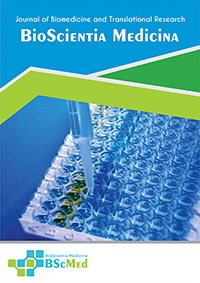Main Article Content
Abstract
Background: The progression of colorectal cancer (CRC) is driven by a complex interplay between chronic inflammation and a resilient population of cancer stem cells (CSCs). Phyllanthus niruri Linn (PNL), a medicinal plant with established immunomodulatory effects, presents a promising adjuvant therapeutic strategy. This study aimed to move beyond qualitative summaries to quantitatively assess PNL's efficacy by synthesizing evidence on its modulation of key inflammatory and CSC biomarkers.
Methods: Following PRISMA guidelines, a systematic search of PubMed, ScienceDirect, Google Scholar, and Scopus (2015–2025) was conducted. Studies quantifying the effects of PNL on Interleukin-8 (IL-8), Cyclooxygenase-2 (COX-2), or CD133 in CRC models were included. Recognizing the profound biological differences between experimental systems, a stratified meta-analysis was performed. Data were pooled using a random-effects model, stratified by study type (in vitro vs. in vivo) and intervention (monotherapy vs. combination therapy). The Standardized Mean Difference (SMD) was the primary effect measure.
Results: Seven studies met the inclusion criteria. In a stratified analysis of in vivo models, PNL monotherapy significantly reduced COX-2 (SMD -2.11; 95% CI [-3.10, -1.12]) and IL-8 (SMD -1.95; 95% CI [-3.01, -0.89]). The effect on the CSC marker CD133 was most pronounced in vitro (SMD -2.98; 95% CI [-4.87, -1.09]), while still significant in in vivo models (SMD -2.15; 95% CI [-3.45, -0.85]). The analysis revealed that the biological context (in vitro vs. in vivo) is a significant determinant of the observed effect size.
Conclusion: This stratified meta-analysis provides robust, context-specific evidence of PNL's ability to suppress key inflammatory and CSC markers in CRC. The findings reveal that PNL's potent anti-CSC activity observed in vitro is translated into a significant, though attenuated, effect in vivo, highlighting the critical influence of the tumor microenvironment and pharmacokinetics. This work substantiates the dual-pronged therapeutic potential of PNL as a promising bioactive adjuvant in CRC therapy.
Keywords
Article Details
As our aim is to disseminate original research article, hence the publishing right is a necessary one. The publishing right is needed in order to reach the agreement between the author and publisher. As the journal is fully open access, the authors will sign an exclusive license agreement.
The authors have the right to:
- Share their article in the same ways permitted to third parties under the relevant user license.
- Retain copyright, patent, trademark and other intellectual property rights including research data.
- Proper attribution and credit for the published work.
For the open access article, the publisher is granted to the following right.
- The non-exclusive right to publish the article and grant right to others.
- For the published article, the publisher applied for the Creative Commons Attribution-NonCommercial-ShareAlike 4.0 International License.





